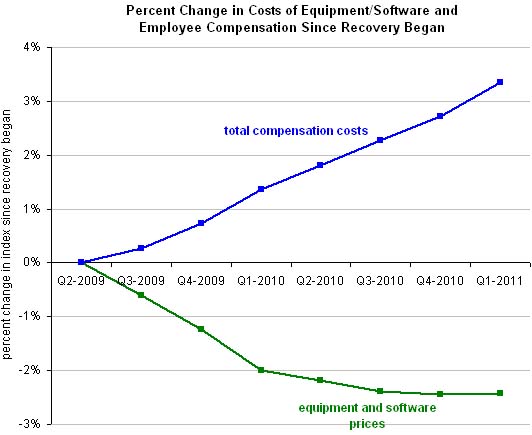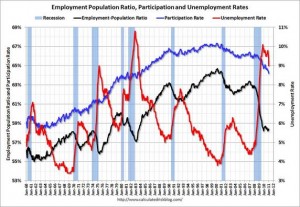Professor Gerard’s posting on the debate about the role of fiscal policy starts with the Larry Summer’s point that the debt deal “solves the wrong problem.” As pointed out previously (see here), I agree with that conclusion. So, what is the “right problem?” Kenneth Rogoff’s answer requires that we understand that this recession is not a typically recession.
The phrase “Great Recession” creates the impression that the economy is following the contours of a typical recession, only more severe – something like a really bad cold. That is why, throughout this downturn, forecasters and analysts who have tried to make analogies to past post-war US recessions have gotten it so wrong. Moreover, too many policymakers have relied on the belief that, at the end of the day, this is just a deep recession that can be subdued by a generous helping of conventional policy tools, whether fiscal policy or massive bailouts.
But the real problem is that the global economy is badly overleveraged, and there is no quick escape without a scheme to transfer wealth from creditors to debtors, either through defaults, financial repression, or inflation.
Rogoff and Carmen Reinhart (R & R), along with others such as economic historian Harold James, emphasize that economic growth built upon too rapid a credit build-up cannot be sustained with expansionary monetary and fiscal policy. It requires de-leveraging (perhaps, you prefer credit build down), a process that cannot be accomplished quickly and offers little positive in the short run that can be gained to soften the blows. The only solutions require that the real level of debt must be reduced to a sustainable level. As noted in the Rogoff quotation above, somehow creditors must bear some of the burden (a “haircut” in Wall Street parlance.) The dynamics of this process lead R & R to deem our most recent period as “The Second Great Contraction.”
Rogoff’s suggests that inflation might be the least costly way to address problem – one might argue it is THE “time honored” policy of choice when governmental commitments exceed its ability to meet them. Of course, this suggestion is not met with great enthusiasm (see “Kids Prefer Cheese” which argues that Rogoff proposes “theft, pure and simple.”) Is it the least bad approach? The answer depends upon one’s view of the functionally of our governance structure. Let’s just say that “dysfunctional” would not egregiously mis-characterize U.S. governance at present.
Recognition of the right problem and a useful framework for policy discussion must come first. As Rogoff puts it in the article linked above,
The big rush to jump on the “Great Recession” bandwagon happened because most analysts and policymakers simply had the wrong framework in mind. Unfortunately, by now it is far too clear how wrong they were.
Acknowledging that we have been using the wrong framework is the first step toward finding a solution. History suggests that recessions are often renamed when the smoke clears. Perhaps today the smoke will clear a bit faster if we dump the “Great Recession” label immediately and replace it with something more apt, like “Great Contraction.” It is too late to undo the bad forecasts and mistaken policies that have marked the aftermath of the financial crisis, but it is not too late to do better.








 In a recent issue of Vanity Fair (of all places),
In a recent issue of Vanity Fair (of all places), 
